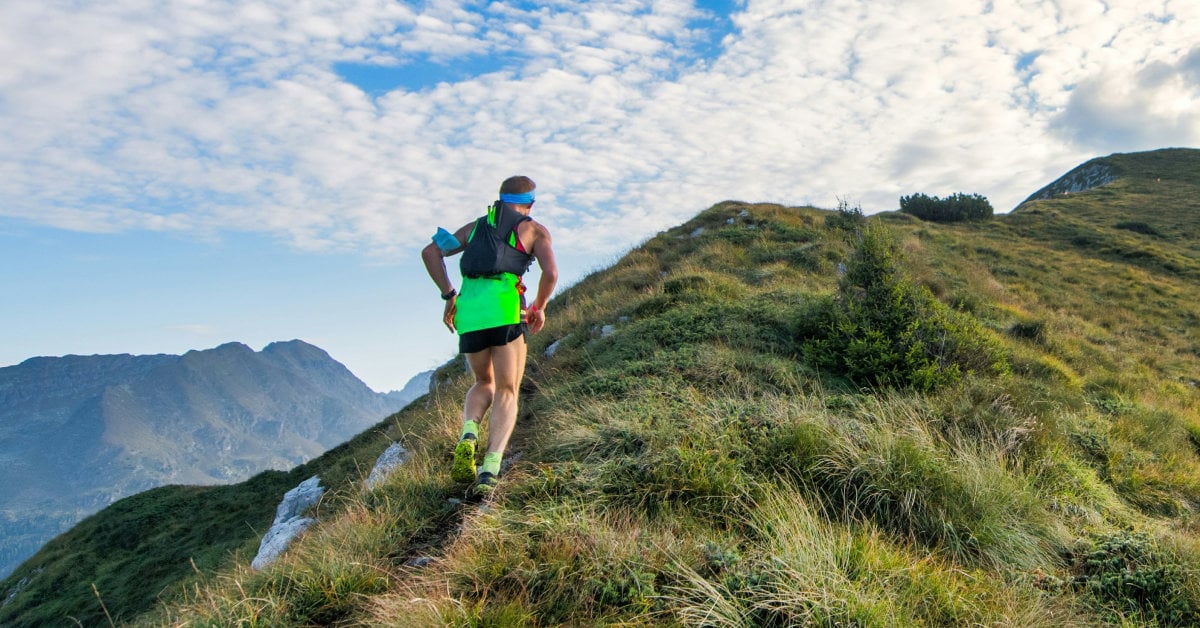The Runner’s Guide to Stronger Strides and Greater Endurance
Many runners have a love/hate relationship with hills. However, systematically incorporating them into our training schedules is a fantastic way to supercharge our cardiovascular systems and work the legs similarly to strength training in the gym. One of the great advantages of hill workouts is the variety of sessions we can include in our routines.
What Are The Benefits Of Hill Training For Runners?
- Developing an explosive and powerful running stride by stimulating and strengthening the leg muscles involved in running on all gradients, especially the hamstrings and glutes. Muscle fibre activation is significantly high when climbing hills, increasing the load and driving adaptation.
- Improving running mechanics by encouraging a quick stride and upright posture, which in turn enhances running efficiency and economy.
- Increasing speed. Short, explosive hill workouts offer similar benefits to speed training on the track, boosting top-end speed while reducing the impact on joints and connective tissues—helpful for injury prevention.
- Building endurance. Longer hill sessions improve aerobic capacity and train us to tolerate sustained uphill running.
When looking for a hill or incline for our hill running workouts, we can choose an incline anywhere from 5 to 15 percent, depending on the length of the uphill interval. The shorter the interval, the steeper the hill can be. The most important thing to consider is that the incline is challenging but that we are able to maintain good momentum, running form and posture throughout the climb.
Some good technique cues for running hills:
- Use a powerful stride with a strong knee and arm drive that propels us up the hill.
- Focus on maintaining an upright posture with a slight lean toward the hill but maintaining a straight line through the legs, hips, torso and neck. We don’t want to be bending over at the waist.
- Use a quick foot turnover and propel ourselves from the balls of our feet. The footstrike should occur below the bodies centre of gravity and not out front and we should make contact with the ground with our fore to midfoot and not the heels. Even if we are predominantly heel-strikers.
- When doing hill reps up and down the same hill. Pace things well. Start conservatively for the first few repetitions and gradually increase the effort through the set. The same applies on an open road, hilly fartlek session where the last hill that we do should be our best effort.
- Keep things gentle and relaxed when jogging back down to the start point when doing hill reps. On open road fartlek sessions the downhills can be more of a stretch out, maintaining momentum more than an easy jog.
Workout options for hill training:
- The short, steep hill repetition session
This will be up and down the same hill a number of times. The steeper the incline, the shorter and more explosive the effort. We also may have to include some walking on the recovery trip back to the bottom in order to allow enough time between reps, which should be about twice as long as the duration of the interval. - The long, steady hill repetition session
This should be done on a hill of up to five minutes and on a more gradual gradient. It doesn’t even have to be much more than a false flat. We want to pace the effort nicely so that we build our speed through the interval while holding a good, tall posture and driving ourselves forward through the hips. Utilising the powerful muscles in the hamstrings and the glutes rather than overemphasising the calves. We want to keep the recovery periods down to about one and a half times the length of the intervals for this session so it will be a quick turn at the top and a steady run back down to the start point. - The Hilly fartlek session
Not up and down the same hill this time but rather over an undulating route that has numerous ups and downs of varying gradients and lengths of hills. As for hill reps, the shorter the hill, the harder we run. So, this session is excellent with different gradients, different length of intervals and varying degrees of efforts. The recovery periods will also vary as the downhills should be as different as the uphills. - The descending hill rep session
Running fast on downhills is a rarely practiced skill but can gain us minutes in races if done properly. We don’t want to be applying the brakes when running downhill. Often, trying to slow down on a descent does more damage than just letting our legs go and flowing our way to the bottom. This session should not be done on a very steep downhill at first. The reps are also not flat out sprints but more focused on technique and control, holding form and maintaining a good, midfoot strike with each step. We want to lean into the downhill and continue to push our momentum forwards as we descend. The stop at the finish should be a gradual deceleration so that we don’t pound our knees and hips before we turn and jog back to the start. As our downhill running technique improves, we can increase the steepness of our downhills but there is no need to overdo it.






Leave a Reply